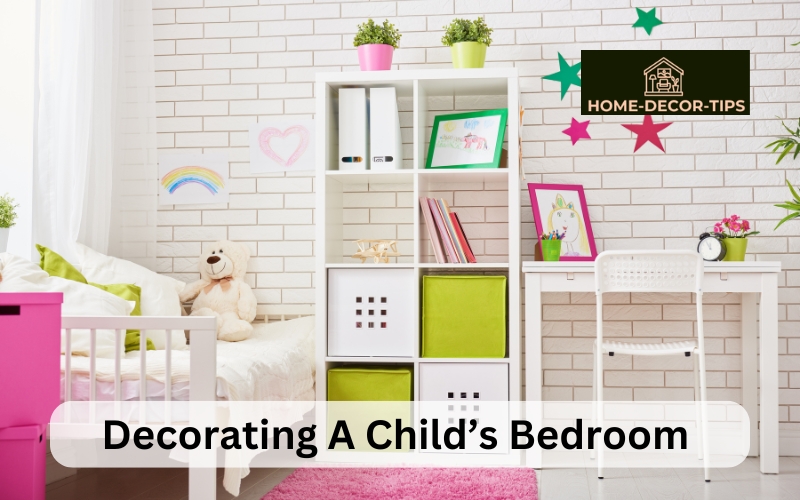What are Some Tips for Decorating a Child’s Bedroom?

Decorating a child’s bedroom can be a fun and rewarding project. It’s a chance to create a space that reflects your child’s personality and interests while being functional and comfortable. Here are some tips to help you navigate the process:
1. Involve Your Child in the Planning
One of the most important tips for decorating your child’s bedroom is to involve them in the process. Ask them about their favorite colors, themes, or characters. This not only makes them feel valued but also ensures they’ll love their new room.
2. Choose a Flexible Theme
Kids’ tastes can change quickly, so it’s wise to choose a theme that can easily be updated. Instead of painting walls with specific characters, use stickers or posters that can be replaced. Opt for a general theme like animals, nature, or space that can grow with your child.
3. Focus on Function
A child’s room needs to be more than just pretty. Make sure there is plenty of storage for toys and books. Beds with drawers underneath or shelves installed at a low height can be great solutions. Also, consider adding a dedicated space for play, study, or creative activities.
4. Safety First
Make safety a priority. Choose non-toxic paints and avoid furniture with sharp corners. Secure furniture to the walls to prevent tipping and ensure window treatments don’t have cords that could pose a risk.
5. Plan for Growth
Remember that your child won’t stay the same age forever. Choose furniture that will grow with them, like a bed that can extend or a desk that can adjust in height. This can save you time and money in the long run.
6. Light it Right
Good lighting is crucial in a child’s bedroom. Include a combination of overhead lighting, a bedside lamp for reading, and maybe even some fun string lights. Natural light is important too, so don’t block windows with heavy furniture.
7. Create a Cozy Reading Nook
Encourage a love for reading by creating a cozy corner in the room. A small bookshelf, a comfortable chair or beanbag, and a reading lamp can make a perfect little reading nook.
8. Keep it Simple but Colorful
Children love color, but too much can be overwhelming. Choose a neutral color for the walls and add pops of vibrant colors through accessories like curtains, bedding, and rugs. These can be easily changed as your child grows.
9. Incorporate Educational Elements
You can add educational value to your child’s room decor. A globe, maps, or even alphabet wall decals can be both decorative and informative. This can subtly encourage learning outside of school.
10. Leave Room for Creativity
Make sure there’s a space in the room where your child can be creative. Whether it’s a blackboard wall, an art easel, or a small table for crafts, encouraging creativity is important for your child’s development.
Conclusion
Decorating your child’s bedroom should be an enjoyable experience. It’s an opportunity to bond with your child and create a space that they can call their own. By involving them in the process, focusing on function and safety, and choosing flexible decor, you can create a room that suits their needs now and grows with them over time.




